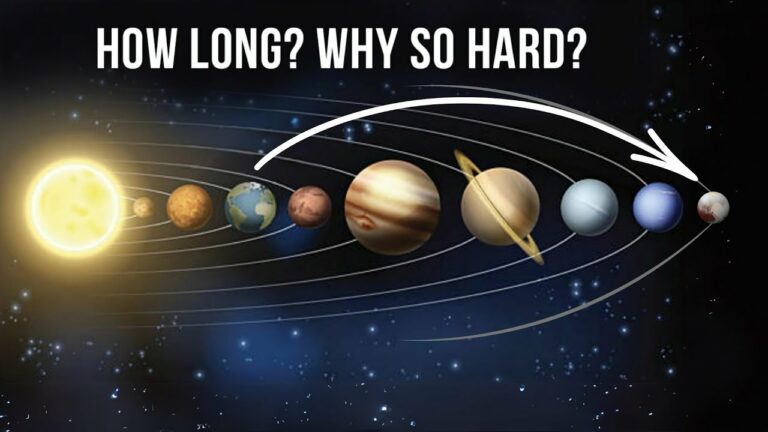Why Is It So Tough To Go To Pluto? How Long Would It Take Us To Go There?
After a long journey from planet to planet explained how long it takes to get to each one which is demonstrated in this video series we have finally reached Pluto.
Most of you are familiar with this fact, which, if you attended elementary or middle school, was ingrained in all of us: Pluto was a planet, in fact, the ninth planet in our solar system. Subsequently, its status was called into doubts after the finding of several similar sized bodies in outer most the region of the system known as the Kuiper Belt after 1992. There was much controversy over the matter and after the discovery of Eris which is more massive than Pluto year the International Astronomical Union had to categorically define what a planet was in 2006 and in the process demoting Pluto. Was it the correct thing for us to do or was it the incorrect thing to do?
We still can’t say for sure. What we aim to explain in this video is how long it takes to get there considering all the possible options.
After 9 and a half years of travel and 5 billion kilometers covered, going farther than any other spacecraft has ever gone, in 2015 New Horizons forced us to completely rethink our ideas about a celestial body considered at best a sterile ball of ice. Far from being a dwarf planet, Pluto has a diameter of 2,400 km. It’s a large rocky core similar to Earth, wrapped in a mantle of frozen water and perhaps even an underground ocean, itself covered by layers of more volatile ices like nitrogen, methane, and carbon dioxide.
All these gases sublimate and then precipitate back onto the surface, freezing and creating an incredibly varied topography with exotic plains, craters, canyons, hills, steep mountains, and perhaps even ice volcanoes. And of course, all this differentiation makes Pluto one of the most colorful worlds in the solar system.
So much so, the New Horizon sensors revealed the landscape of stunning vistas. Scientists studying the images believe that the incredible variety of these landscapes comes from eons of interaction between the highly volatile and mobile ices of methane, nitrogen, and carbon monoxide, and the inert water ice, with fascinating cycles of evaporation and condensation cycles even richer than those on Earth, where there’s only one material that condenses and evaporates, water.
On Pluto, however, there are at least three elements interacting in ways we still don’t fully understand across the entire surface.
Do not forget to share your opinion with us to provide you with the best posts !




0 Comments